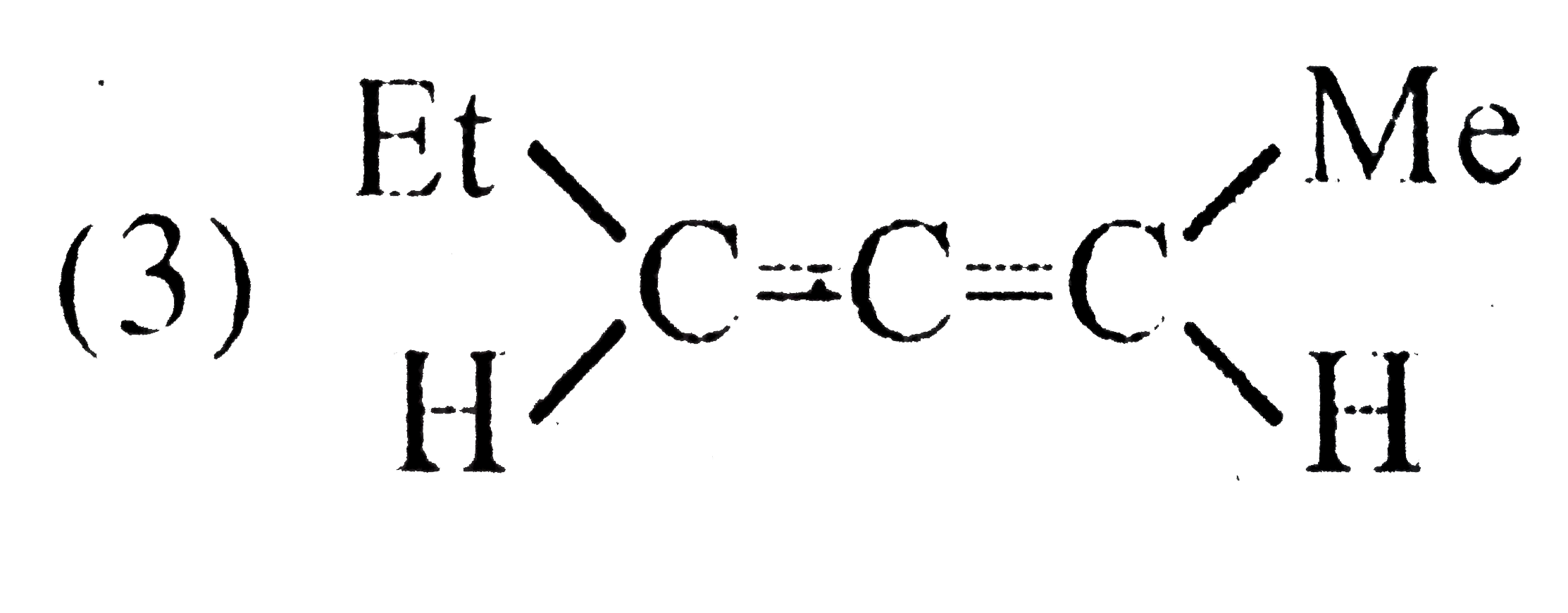Which of the following compound can show both optical and geometrical isomerism :



All
To determine which compound can show both optical and geometrical isomerism, we need to analyze the compounds based on the criteria for each type of isomerism.
1. Understanding Geometrical Isomerism:
- Geometrical isomerism occurs due to restricted rotation around a double bond (pi bond) or in cyclic compounds.
- For a compound to exhibit geometrical isomerism, it must have at least one double bond or be cyclic, and the groups attached to the double bond or the ring must be different.
2. Checking for Geometrical Isomerism:
- Identify if the compound has a double bond or is cyclic.
- Check if the substituents on either side of the double bond (or on the ring) are different.
- If both conditions are satisfied, the compound can exhibit geometrical isomerism.
3. Understanding Optical Isomerism:
- Optical isomerism occurs when a compound has a chiral center, which is a carbon atom bonded to four different groups.
- A compound can also show optical isomerism if it has a non-superimposable mirror image.
4. Checking for Optical Isomerism:
- Identify if there is a chiral center in the compound.
- If a chiral center is present, the compound can exhibit optical isomerism.
5. Analyzing Each Compound:
- Compound A: Check for geometrical isomerism first. If it has a double bond and different groups, it can show geometrical isomerism. Then check for a chiral center to see if it can show optical isomerism.
- Compound B: Similar analysis as Compound A. If it has a double bond with different groups and a chiral center, it can show both types of isomerism.
- Compound C: Check for the presence of double bonds and chiral centers. If it has consecutive double bonds, it may not show geometrical isomerism.
6. Conclusion:
- After analyzing the compounds, identify which one satisfies both conditions for geometrical and optical isomerism.
Final Answer:
- The correct answer is Compound B, as it shows both geometrical isomerism (due to the presence of a double bond with different groups) and optical isomerism (due to the presence of a chiral center).
- Geometrical isomerism occurs due to restricted rotation around a double bond (pi bond) or in cyclic compounds.
- For a compound to exhibit geometrical isomerism, it must have at least one double bond or be cyclic, and the groups attached to the double bond or the ring must be different.
- Identify if the compound has a double bond or is cyclic.
- Check if the substituents on either side of the double bond (or on the ring) are different.
- If both conditions are satisfied, the compound can exhibit geometrical isomerism.
- Optical isomerism occurs when a compound has a chiral center, which is a carbon atom bonded to four different groups.
- A compound can also show optical isomerism if it has a non-superimposable mirror image.
- Identify if there is a chiral center in the compound.
- If a chiral center is present, the compound can exhibit optical isomerism.
- Compound A: Check for geometrical isomerism first. If it has a double bond and different groups, it can show geometrical isomerism. Then check for a chiral center to see if it can show optical isomerism.
- Compound B: Similar analysis as Compound A. If it has a double bond with different groups and a chiral center, it can show both types of isomerism.
- Compound C: Check for the presence of double bonds and chiral centers. If it has consecutive double bonds, it may not show geometrical isomerism.
- After analyzing the compounds, identify which one satisfies both conditions for geometrical and optical isomerism.
- The correct answer is Compound B, as it shows both geometrical isomerism (due to the presence of a double bond with different groups) and optical isomerism (due to the presence of a chiral center).
Topper's Solved these Questions
Similar Questions
Knowledge Check
Which of the following compound can show geometrical isomerism ?
A B
B C
C D
D
Which of the following compound shows optical isomerism ?
ACH3CH2CH3BCH2OHCHOHCH2OHCCH3CHOHC2H5DNone of theseWhich of the following compounds can exhibit geometrical isomerism?
AH3C−CH2−CH=CH−CH3B C
C D
D
Which of the following compounds can show geometrical optical and conformational isomerism.
View SolutionWhich of the following compound can not show geometrical isomerism?1
View SolutionWhich of the following compound will show optical isomerism
View SolutionWhich of the following compounds will exhibit cis-trans (geometrical ) isomerism ?
View SolutionWhich of the following compounds will exhibit cis-trans (geometrical) isomerism?
View Solution
